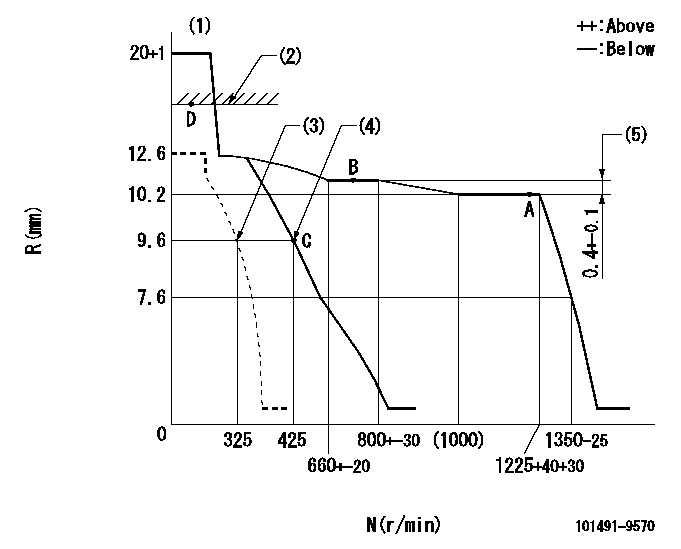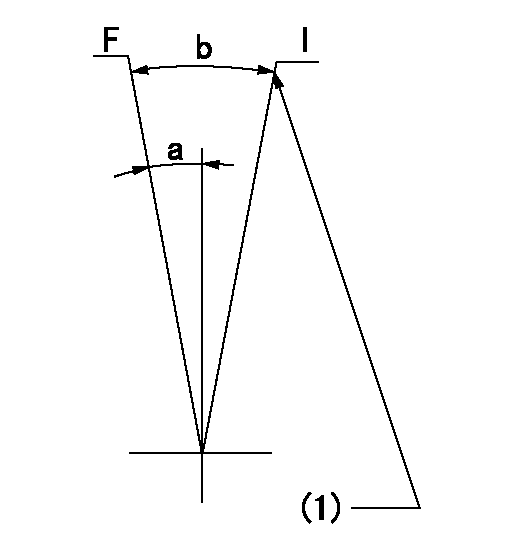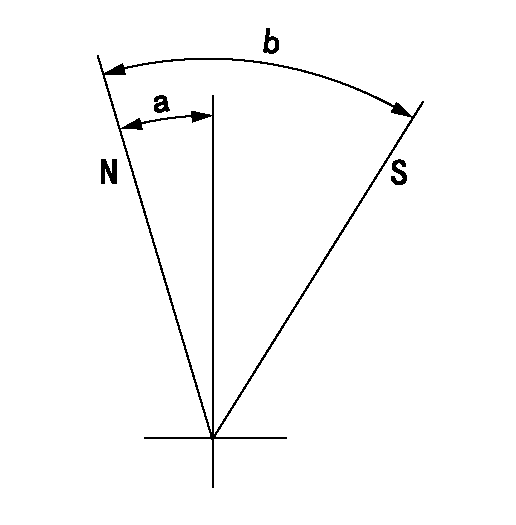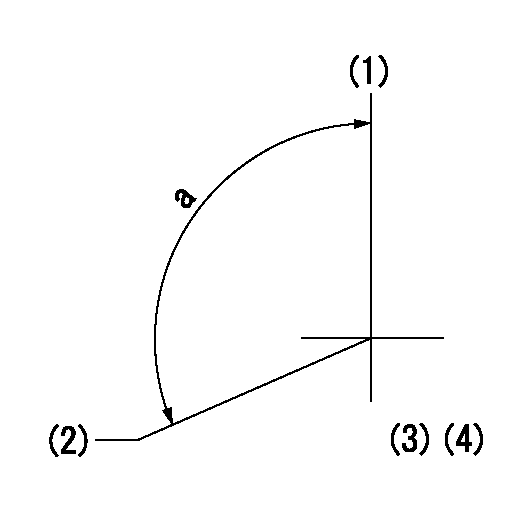Information
ZEXEL
101491-9570
1014919570

Rating:
Service parts 101491-9570 INJECTION-PUMP ASSEMBLY:
1.
_
6.
COUPLING PLATE
7.
COUPLING PLATE
8.
_
9.
_
11.
Nozzle and Holder
12.
Open Pre:MPa(Kqf/cm2)
16.7(170)
15.
NOZZLE SET
Cross reference number
ZEXEL
101491-9570
1014919570
Zexel num
Bosch num
Firm num
Name
101491-9570
Calibration Data:
Adjustment conditions
Test oil
1404 Test oil ISO4113 or {SAEJ967d}
1404 Test oil ISO4113 or {SAEJ967d}
Test oil temperature
degC
40
40
45
Nozzle and nozzle holder
105780-8140
Bosch type code
EF8511/9A
Nozzle
105780-0000
Bosch type code
DN12SD12T
Nozzle holder
105780-2080
Bosch type code
EF8511/9
Opening pressure
MPa
17.2
Opening pressure
kgf/cm2
175
Injection pipe
Outer diameter - inner diameter - length (mm) mm 6-2-600
Outer diameter - inner diameter - length (mm) mm 6-2-600
Overflow valve opening pressure
kPa
157
123
191
Overflow valve opening pressure
kgf/cm2
1.6
1.25
1.95
Tester oil delivery pressure
kPa
157
157
157
Tester oil delivery pressure
kgf/cm2
1.6
1.6
1.6
Direction of rotation (viewed from drive side)
Right R
Right R
Injection timing adjustment
Direction of rotation (viewed from drive side)
Right R
Right R
Injection order
1-3-4-2
Pre-stroke
mm
3.4
3.35
3.45
Beginning of injection position
Drive side NO.1
Drive side NO.1
Difference between angles 1
Cal 1-3 deg. 90 89.5 90.5
Cal 1-3 deg. 90 89.5 90.5
Difference between angles 2
Cal 1-4 deg. 180 179.5 180.5
Cal 1-4 deg. 180 179.5 180.5
Difference between angles 3
Cyl.1-2 deg. 270 269.5 270.5
Cyl.1-2 deg. 270 269.5 270.5
Injection quantity adjustment
Adjusting point
A
Rack position
10.2
Pump speed
r/min
1225
1225
1225
Average injection quantity
mm3/st.
35.7
34.7
36.7
Max. variation between cylinders
%
0
-2.5
2.5
Basic
*
Fixing the lever
*
Injection quantity adjustment_02
Adjusting point
C
Rack position
9.6+-0.5
Pump speed
r/min
425
425
425
Average injection quantity
mm3/st.
8
6
10
Max. variation between cylinders
%
0
-14
14
Fixing the rack
*
Test data Ex:
Governor adjustment

N:Pump speed
R:Rack position (mm)
(1)Target notch: K
(2)RACK LIMIT
(3)Set idle sub-spring
(4)Main spring setting
(5)Rack difference from N = N1
----------
K=15 N1=700r/min
----------
----------
K=15 N1=700r/min
----------
Speed control lever angle

F:Full speed
I:Idle
(1)Stopper bolt setting
----------
----------
a=(16deg)+-5deg b=(18deg)+-5deg
----------
----------
a=(16deg)+-5deg b=(18deg)+-5deg
Stop lever angle

N:Pump normal
S:Stop the pump.
----------
----------
a=2.5deg+-5deg b=53deg+-5deg
----------
----------
a=2.5deg+-5deg b=53deg+-5deg
Timing setting

(1)Pump vertical direction
(2)Position of gear mark 'CC' at No 1 cylinder's beginning of injection
(3)-
(4)-
----------
----------
a=(130deg)
----------
----------
a=(130deg)
Information:
Lubricant Viscosity Recommendations
See chart for recommended viscosity and temperature range. The required performance criteria for the oil is defined in the previous Lubricant Specification section.The minimum temperature for the viscosity grade provides guidelines for the lowest starting temperature with a "cold soaked" engine. Base stocks for blending the oil formulations do differ, and variations can exist within a viscosity grade on low temperature characteristics. Therefore, a particular oil may allow lower starting temperatures than given in the chart. Your oil supplier can provide additional information on oil properties.The recommendation is to use the highest viscosity oil possible. Even though the ambient temperature may be low, operating engines can still be subjected to normal oil temperatures because of regulated temperature components. Higher viscosity fluids provide better protection to all components contacted during the full day work cycle.Multi-viscosity oils are preferred because of full protection through a wider temperature range. See chart for recommended viscosity and temperature range.To determine if the oil in the crankcase will flow in cold weather, remove the oil dipstick before starting the engine. If the oil flows off, the oil is fluid enough to circulate properly.Lubricant Viscosity Chart
Refill Capacities
These refill capacities reflect the crankcase capacity plus filter. Auxiliary oil filter systems will require additional oil. For all auxiliary oil filter system information consult the OEM or auxiliary oil filter system manufacturer.In order to properly maintain the cooling system, Total Cooling System capacity must be known. This capacity information will be needed to determine the amount of antifreeze and coolant additive (conditioner) required for the cooling system.
See chart for recommended viscosity and temperature range. The required performance criteria for the oil is defined in the previous Lubricant Specification section.The minimum temperature for the viscosity grade provides guidelines for the lowest starting temperature with a "cold soaked" engine. Base stocks for blending the oil formulations do differ, and variations can exist within a viscosity grade on low temperature characteristics. Therefore, a particular oil may allow lower starting temperatures than given in the chart. Your oil supplier can provide additional information on oil properties.The recommendation is to use the highest viscosity oil possible. Even though the ambient temperature may be low, operating engines can still be subjected to normal oil temperatures because of regulated temperature components. Higher viscosity fluids provide better protection to all components contacted during the full day work cycle.Multi-viscosity oils are preferred because of full protection through a wider temperature range. See chart for recommended viscosity and temperature range.To determine if the oil in the crankcase will flow in cold weather, remove the oil dipstick before starting the engine. If the oil flows off, the oil is fluid enough to circulate properly.Lubricant Viscosity Chart
Refill Capacities
These refill capacities reflect the crankcase capacity plus filter. Auxiliary oil filter systems will require additional oil. For all auxiliary oil filter system information consult the OEM or auxiliary oil filter system manufacturer.In order to properly maintain the cooling system, Total Cooling System capacity must be known. This capacity information will be needed to determine the amount of antifreeze and coolant additive (conditioner) required for the cooling system.
Have questions with 101491-9570?
Group cross 101491-9570 ZEXEL
Nissan-Diesel
Mazda
Mazda
Nissan-Diesel
101491-9570